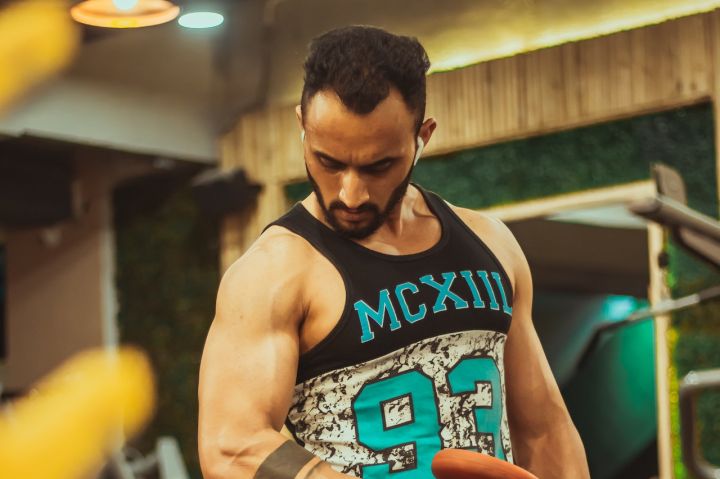The Heavier The Weight, The Greater The Demands On Flexibility And Stability, How Do They Train Their Shoulders?
if you were to rank your chest, shoulders, back, legs and arms, what would be the last in your training order? It goes without saying that the top three would be the shoulders, but i'm sure the last one would be the shoulders.
In fact, if you think about it, all training requires core stability, while no movement can leave the hands. Where is the cornerstone? The bedrock is in the shoulders. A healthy, flexible, developed and stable shoulder is the starting point for all your training.

the higher the weight, the higher the demands on flexibility and stability. If you keep hovering over a weight, it's mostly a reminder that your shoulders need to be strengthened.
You need an intense shoulder workout, now set you straight.
Before we start training, we need to know the muscles used in the different movements and how they affect the shoulders. This information is important for your next shoulder training session.

types of shoulder muscles
simply put, the shoulder is made up of two groups of muscles, the intrinsic muscles and the extrinsic muscles. The intrinsic muscles start at the scapula or clavicle and attach to the humerus, while the extrinsic muscles start at the trunk and attach to the shoulder.
The extrinsic muscle group consists of four muscles and the intrinsic muscle group consists of three muscles, each of which we will analyse in detail.

extrinsic muscles
1. The trapezius: This is a triangular-shaped muscle that runs down the spine and across the scapula. This muscle supports the arm and shoulder.
2. Latissimus dorsi: This is one of the largest muscles of the back and is partially covered by the trapezius muscle. This is often referred to as the "Lats" And is important for weight control.
3. Scapulae: Located on the side and back of the neck, the main function of this muscle is to lift the scapulae that connect the arms to the clavicle.
4. Rhomboids: Muscles located at the top of the back and in the middle of the scapula. When contracted, they pull the scapulae together.

intrinsic muscles
1. Deltoid muscle: Made up of three muscle fibres (anterior, lateral and posterior) connected by thick tendons and held in a v-shape. This muscle is responsible for the rotation of the arm and prevents dislocation.
2. The large circular muscle: Located under the upper arm, it supports the latissimus dorsi muscle.
3. Tendon sleeve: This is a group of muscles and tendons that keep the upper arm bone neatly tightened at the shoulder joint to prevent dislocation.

4 recommended movements
the following four movements will target every muscle in the shoulder and build strength in the upper body.
Seated dumbbell push-ups
this is an isolated shoulder movement that is able to lift more weight because of the flexibility of the dumbbells. Sitting on a bench, raise the dumbbells to the side of your ears with your palms facing outwards.

seated dumbbell push-up
push the dumbbells upwards and return to the starting position to complete a movement. Four sets of 10 to 15 reps each are recommended.
Side planks
the old saying "Slow and steady wins the race" Is how to do this movement. The slower you lift your arms in the movement, the better your muscles will be in the end.

side planks with dumbbells
stand up straight and hold a dumbbell in each hand, on either side of your body. Raise your arms at the same time until they are in a straight line with your shoulders, then return to the starting position. So try to do 4 sets of 10 to 15 reps each.
Front planks
this is a great movement to work the front triceps. Take a barbell or dumbbell and stand up straight with your palms back. Lift the weight until your arms are in a straight line in front of your body and return to the starting position to complete a movement.

dumbbell front planks
again this movement uses a lighter weight and more reps, so do 4 sets of 10 to 15 reps each.
Reverse flying bird
the muscles targeted in this movement are the anterior deltoids, rhomboids and obliques, so be prepared for a burning sensation in your muscles. Sit on a butterfly machine with your arms extended backwards.

reverse flyes
make sure to squeeze hard at the end of the movement and then slowly return your arms to the starting position. This is one movement and you will need to do 4 sets of 10 to 15 reps each.
The benefits of strong shoulders are not just about looking better in shape, but more relevant in terms of breaking through training bottlenecks and reducing injuries. So what are you waiting for, get ready for some intense shoulder training.
